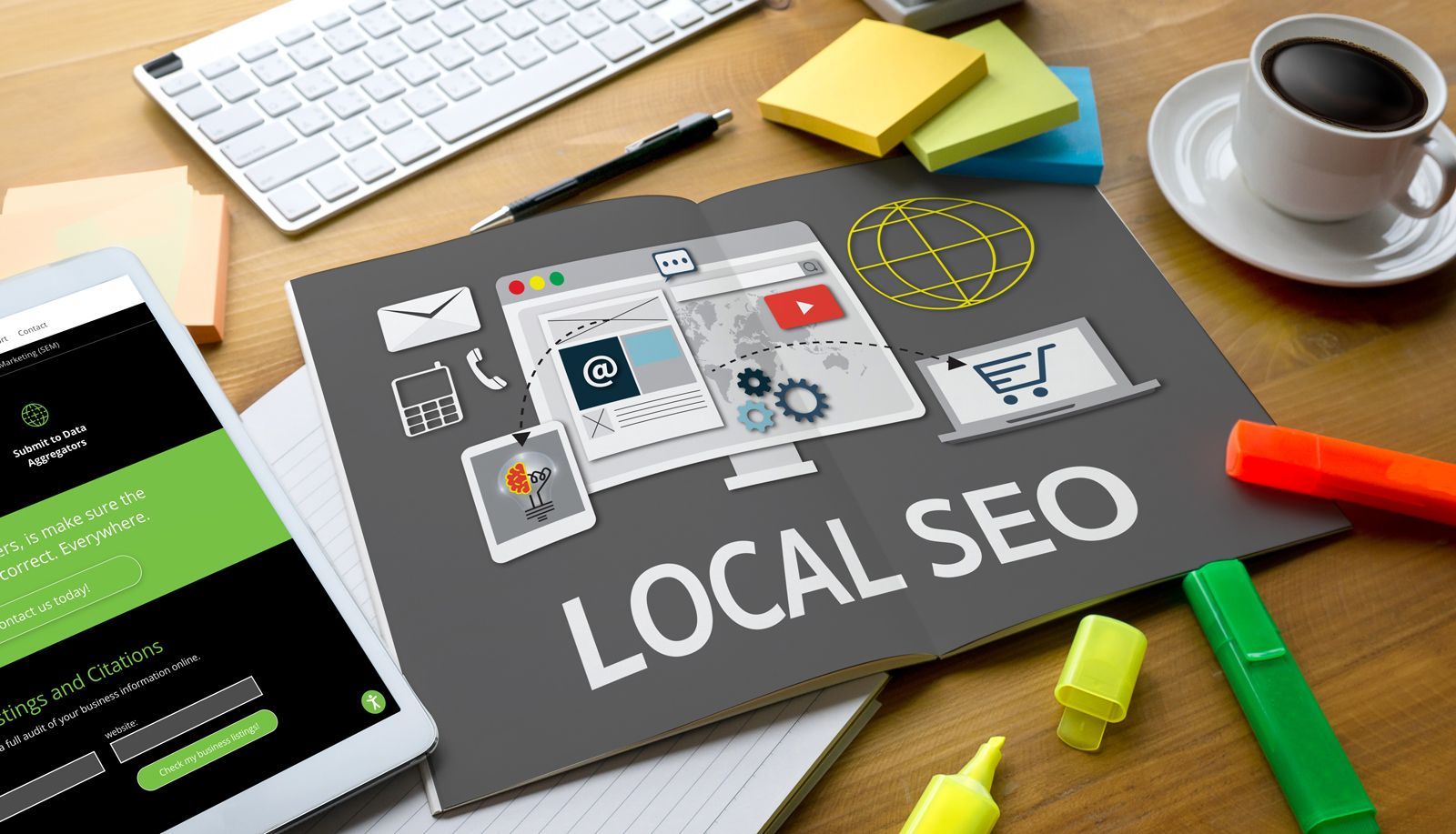(SEM) Search Engine Marketing: What Is the Best Way to Get Started?
Digital marketing is becoming more and more competitive, and businesses are struggling to keep up. Believe it or not, many businesses now devote 20% to 30% of their annual budgets to marketing.
Fortunately, it doesn't have to be this way. With the right mix of PPC marketing and SEO marketing, you can build high-quality traffic without breaking the bank. Let's talk about some of the best ways to get started with SEM to help grow your enterprise!

What Is SEM?
Search engine marketing (SEM) encompasses all of the marketing tactics you use on search engines like Google. This includes advertising and search engine optimization (SEO), which is the process of optimizing your website content to rank organically.
Don't let the two terms confuse you. SEO is SEM, but SEM is not only SEO.
We'll use Google for our examples, as they have control over 90% of the search traffic in the last several years. When you search for something on Google, you see ads at the top that typically bypass the organic results in the middle and usually more ads at the bottom. All of these could be a result of search engine marketing on the part of different brands.
Of course, that's not always the case, as there are news articles, scholarly studies, and plenty of other information available online. However, it is the case in many searches that marketing tactics dominate.
That isn't to say that SEM content can't offer useful information. On the contrary. We strongly encourage enterprises to provide high-quality content to their users as part of their SEM strategies, which we'll touch upon later.
Regardless, SEO and search ads are great ways to build both short-term and long-term traffic to your website, brand awareness, and revenue. Here's why.
Why Is SEM Important?
Did you know that 68% of online experiences start with a search engine? While that alone says enough about the importance of SEM campaigns, that's far from the only reason.
Yes, without search engines, you're missing out on a large portion of the market share. Great, but can't you find traffic elsewhere along their journey? Well, yes, but more importantly, search engine traffic is simply superior.
We wouldn't use that word if we didn't mean it. You can reflect on your own experience as a web user. Do you pay as much attention to the ads on the side of the web page you're scrolling through or the search results for a question that you took the initiative to ask?
In almost every case, the latter is the winner there. If you're actively looking for information on a search engine, you're going to pay attention to the results that come up. This leaves a perfect opportunity for marketers to spread the word about their products or services.
However, you still have to do so in a way that entices your intended audience. For that, you have to tread a fine line. Let's talk about that.
The Dos and Don'ts of SEM
Before we jump in and start our first SEM campaigns, let's go over some general best practices. Here are the "do"s and "don't"s of SEM marketing.
Don't Limit Yourself
First, and most importantly, don't limit yourself to only using PPC ads or SEO. That's akin to using social media but refusing to build an email newsletter.
There are many reasons to use both in your strategy. First, SEO takes time to build, whereas PPC ads can generate revenue in the short term. While you build your SEO strategy, you can generate search traffic through advertisements.
Conversely, a successful SEO strategy will make you less dependent on paid ads. The sky is the limit with SEO, meaning that your yield will have an unlimited amount of traffic without additional expenses. This can even last for years with minimal upkeep, depending on the keywords.
Second, if one misses your audience, the other might hit them! They may skip over the search ads in favor of the organic results, as most users do. If you don't have an organic SEM strategy, they won't find you.
On the other hand, someone may just click on the first answer they see, which is almost always a search ad.
Finally, diversifying your strategy is just a smart move. You do this with your business investments and other marketing strategies, so why not with SEM?
Do Offer Value to Readers
Engagement and quality. If you can remember two words from this article, let it be those.
The content on your website needs to engage and offer value to the reader. If you have low-quality content, Google may even penalize you, which will destroy your SEO strategy.
Moreover, the best practice here is to create content for users, not search engines. Don't just haphazardly place keywords in your content for the sake of ranking. Make your content legible and offer answers to their questions.
This won't cut into your marketing efforts. Instead, it will enhance them.
A common strategy is to offer the information users seek, highlight some of the pain points involved, and position your product or service as the solution. Then, follow up with a strong call-to-action (CTA) to have them contact you or learn more.
For example, if you run a window tinting shop, you could write about DIY window tinting. Give a step-by-step, detailed set of instructions, talk about some of the challenges, and let readers know they can come to your shop for expert assistance.
Don't Neglect Your Website
SEM does not take place solely on a search engine. Your website is the center of your entire digital marketing strategy, and nowhere is that more true than with SEM.
Getting traffic to your website is half the battle. Keeping it is the other half.
Beyond just the content, you need to have a high-quality website. Not only will this directly benefit your SEO efforts, but it will also help build positive brand associations, retain traffic, and boost conversion rates. At the very least, your website needs:
- A clean navigation system
- Fast loading times
- Optimization for mobile devices
- A clear page hierarchy
- Quality links (inbound and outbound)
- Optimized content (alt tags, link titles, etc.)
- Proper keyword distribution
The list goes on. Each of these factors will signal to Google that you have a quality website, boosting your SEO strategy. They will also help your users interact with your site, which will help improve your entire digital marketing strategy.
Unfortunately, website standards change rapidly. Managing your website over time and keeping it up to date is just as important as revamping it!
Do Your Keyword Research
Keyword research is the backbone of your entire SEM strategy. Ranking for the right keywords is essential, and there are plenty of ways to find the right ones.
For PPC search ads, you will need to bid on these keywords. To save yourself money and potentially improve conversion rates, you can find long-tail keywords that are relevant to your business.
A good SEM strategy will include a healthy mix of both short-tail and long-tail keywords across your website and PPC ads. Short-tail keywords are the obvious ones like "window tinting" or "ice cream". They have the highest search volume and the highest competition.
Conversely, long-tail keywords are more specific like "window tinting services in southern New Hampshire". These are extremely relevant and often come with much higher conversion rates at the expense of less traffic.
Using the keyword research tool of your choice, develop a list of keywords and use them periodically throughout your website content and ads.
How to Develop a Strong SEM Strategy
Now that you understand the basics, let's put them into practice. Here's how to start developing a quality SEM strategy!
Optimize Your PPC Campaign
Google and other websites make it easier than ever to optimize your ad campaigns to target your intended audience. For example, a law firm in New Hampshire doesn't want to waste money targeting people in New York if they can't practice in the state. Google makes this incredibly easy to navigate.
It's also very affordable to start. If it's your first time, Google usually gives you a $300 Adwords coupon to start, and you can spend it however you want. This is a great way to test the waters with little to no risk.
However, this doesn't help you optimize the ad content itself. They will help you with keywords, the length of your title, and other factors, but make sure you invest in a quality ad campaign.
Test Your Ad Campaigns
With your initial ad campaigns, try some small-scale A/B testing to help determine what works and what doesn't. If you're unfamiliar with the term, A/B testing is where you try two of the same campaigns (A and B) with one clear distinction.
From there, you track the performance of both to see which outperforms the other. The more you do this in the early days of your campaign, the easier it will be to improve conversion rates later on.
Track Your Performance
Google Analytics, Google Search Console (GSC), and Google Tags Manager (GTM) are three of the best tools in the world for measuring an ongoing marketing campaign. Google Analytics works directly on your website, and GSC and GTM help track your search engine performance.
Begin tracking your campaign (for free) with these helpful tools right away. They can give invaluable insights into your campaigns to help you make adjustments over time, which will only save you money.
Start a Blog
If your website and keyword research are the foundation of your SEM strategy, content marketing is the house you build upon it. Without a blog (or another content outlet), you limit the number of pages on your website. In turn, this limits your chances of ranking.
Think about it this way; how many 5-page websites are on the web? They all have a contact page, home page, "about us" page, and a couple of others. How do you expect to rank with the same five pages as every other website?
Conversely, a blog gives you unlimited opportunities to rank for various keywords, and those chances are much stronger than with your original pages. That's because people search for information, not brands they've never heard of. Offering that information is the best way to rank for various keywords organically, while also providing yourself with landing pages for your PPC ads.
Give Yourself a Boost
Finally, the best thing you can do for your strategy is to give yourself a headstart. The way to do that is with professional SEM services.
If you're new to it, there's a big learning curve, and playing the "guessing game" can lead to unnecessary losses. This will ensure that you see results as soon as possible, and that you aren't wasting your money hoping for the best!
However, it's also important to remember that optimization and ongoing ad management are the keys to success. If you neglect your PPC ads or SEO strategy, you won't see the same results.
Launch Your SEM Campaign Today
Now that you know the basics of SEM, put these tips to use and start ranking today. SEO takes time to build, so having a diverse SEM strategy is the best way to build long-term, sustainable traffic. With the right help, you can start seeing the benefits as soon as possible.
Stay up to date with our latest digital marketing tips, and don't hesitate to contact us with any questions or for help with your SEM strategy!
Media Contact
Company Name: Clover Creative Group LLC
Contact Person: Shawn Dixon
Email: Send Email
Phone: 603-677-7032
Address: 234 Camp Rd.
City: Plainfield
State: New Hampshire
Country: United States
Website: clovercreativegroup.com
Did you find this article helpful? Please consider sharing.







